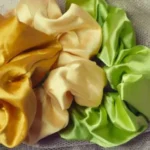Importance of Knowing How to Sew Pants

Sewing your own pair of pants can be a rewarding and empowering experience. Not only does it give you the freedom to create well-fitting and professionally finished pants, but it also allows you to express your style through various fabric choices and designs. In this guide, we will walk you through the essential steps to sew a variety of pants, from basic elastic-waist pants to more elaborate styles like dress pants or lounge pants.
Basic Sewing Skills Required
Before diving into the world of sewing pants, it’s important to have some basic sewing skills. Familiarize yourself with terms like seam allowance, zig-zag stitch, and straight stitch. Understanding these terms will be crucial as you embark on your sewing journey. Additionally, having a reliable sewing machine, measuring tape, and the right fabric and pattern pieces are fundamental to your success.
Getting Started with Sewing Pants: Gathering Supplies

Sewing Machine: Ensure your sewing machine is in good working condition, with the right needle for your chosen fabric.
Fabric and Pattern Pieces: Select a fabric that suits your style and purpose. Gather the pattern pieces according to the type of pants you wish to create.
Measuring Tape: Accurate measurements are the key to well-fitting pants. Invest time in taking precise measurements of your waist, hips, and inseam length.
Choosing the Right Pattern
Consider the type of pants you want to make – whether it’s elastic waist pants, dress pants, or lounge pants. Review the available patterns, keeping in mind your sewing skill level and personal preferences.
Taking Accurate Measurements
Waist Measurement: Measure your natural waistline, ensuring the tape is snug but not tight.
Hip Measurement: Measure the fullest part of your hips for a comfortable fit.
Inseam Length: Measure from the crotch seam to the desired length for accurate inseam measurements.
Preparing the Fabric and Pattern Pieces

Before cutting the fabric, prewash it to prevent shrinking after sewing. Lay out the fabric and pattern pieces, paying attention to the fabric’s grain and following the pattern instructions meticulously.
Sewing Pants
Sew Pant Legs: Stitch the pant legs together, ensuring proper seam allowance. Zig-zag stitches are excellent for preventing fraying.
Elastic Waistband: For pull-on pants, create a comfortable elastic waistband using the correct size elastic.
Seam Finishing: Finish raw edges by serging or using other suitable techniques, ensuring a clean and durable finish.
Button Closure: If making pants with a button closure, carefully follow the pattern instructions for button placement and create a secure button placket.
Tips and Tricks for Successful Sewing
Thread Tension: Adjust the thread tension on your sewing machine to ensure even and accurate stitching.
Pattern Size: Choose the correct pattern size according to your measurements, and follow the pattern instructions for a proper fit.
Pocket Placement: Pay attention to pocket placement to avoid any excess bulk in unwanted areas.
Crotch Reinforcement: Reinforce the crotch area with additional lines of stitching for added durability.
Conclusion
Sewing your own pants can be a fulfilling and creative endeavor. Whether you’re a beginner or an experienced seamstress, following a well-structured sewing tutorial and understanding the intricacies of the sewing process will result in beautiful, comfortable garments that you can proudly wear. So, download this comprehensive guide, gather your supplies, and embark on the journey of creating your unique, handmade pants. Happy sewing!
FAQs
Absolutely! This guide is designed for sewers of all skill levels. Start with basic elastic-waist pants to build confidence before venturing into more complex patterns like dress pants or lounge pants.
Consider your skill level and personal style. Basic elastic-waist pants are great for beginners, while those with more experience can explore dress pants or lounge pants. Reviewing a variety of patterns and following our guide will help you make an informed choice.
Basic tools include a sewing machine, measuring tape, spool of thread, and fabric scissors. Depending on the pants you’re making, you may also need items like safety pins, a button placket template, and a variety of needles.
Follow our detailed instructions on taking measurements. Ensure the tape is snug but not tight, and double-check your measurements before cutting the fabric. Choosing the correct pattern size based on your measurements is crucial for a perfect fit.
Certainly! The choice of fabric allows you to express your style. Cotton fabric is a versatile option, but you can also try flannel for lounge pants or different materials for unique creations.
The crotch seam is where the pant legs meet. It’s crucial for comfort and mobility. Reinforce it with additional lines of stitching to ensure durability and a longer lifespan for your pants.



GIPHY App Key not set. Please check settings
One Comment